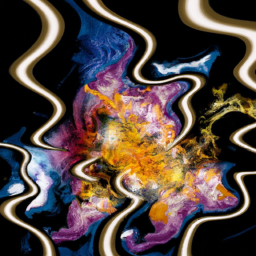I understand your initial reaction. Another article about a movie? However, please allow me to clarify – What Dreams May Come is unique among the usual film offerings.
It’s a masterpiece that will leave you breathless and pondering the mysteries of life long after the credits roll.
From its stellar cast to its spectacular visual effects, this movie has it all.
And let’s not forget the exploration of the afterlife and the themes it tackles with such sensitivity and grace.
Trust me when I say that this is a movie you won’t want to miss.
So grab some popcorn and settle in for an emotional journey unlike anything you’ve experienced before.
Key Takeaways
- What Dreams May Come is a visually stunning movie that explores philosophical questions about life and death through the afterlife.
- The film uses color symbolism and cinematography techniques to convey different emotions and states of being, and challenges viewers to think outside the box about what may lie beyond this life.
- The movie offers an emotionally gripping story that tackles themes of love, loss, and redemption in the afterlife, and prompts viewers to contemplate their own beliefs about death and dying processes.
- While the film received mixed reviews from audiences and did not perform as well at the box office as other Robin Williams films, it is considered a masterpiece for its technical achievements in production design and cinematography, and for its unique perspective on death as a new beginning.
Overview of the Movie’s Plot
You’re gonna love the emotional rollercoaster that What Dreams May Come takes you on as you follow the journey of a man who travels through different levels of heaven and hell in order to save his wife’s soul. The movie, based on Richard Matheson’s novel, explores themes such as love, loss, and life after death.
The plot revolves around Chris Nielsen (played by Robin Williams), who dies in a car accident and finds himself in heaven. The first part of the movie focuses on Chris’ experience in heaven, which is beautifully depicted with vibrant colors and stunning landscapes.
However, his paradise is short-lived when he discovers that his wife, Annie (played by Annabella Sciorra), has committed suicide and is now trapped in her own personal hell. This sets off a chain reaction of events that leads Chris on a dangerous journey through different realms of the afterlife to rescue Annie from eternal damnation.
The analysis and interpretation of What Dreams May Come are complex due to its philosophical nature. The movie raises questions about the meaning of life and what happens after we die. It also explores how our actions can affect our loved ones even after we’re gone.
Overall, What Dreams May Come offers a unique perspective on the afterlife that challenges traditional beliefs while delivering an emotionally gripping story. With this foundation laid out for you, let’s dive into the stellar cast and crew behind this masterpiece!
Stellar Cast and Crew
When it comes to discussing the stellar cast and crew of What Dreams May Come, two key points stand out for me:
Robin Williams delivered an exceptional portrayal of Chris Nielsen, a man who journeys through the afterlife in search of his wife. His emotional depth and range were truly remarkable, making him the perfect fit for this complex role.
Director Vincent Ward’s vision brought a unique visual style and sense of wonder to the film that truly captured its ethereal nature.
Overall, the combination of Williams’ performance and Ward’s direction made What Dreams May Come a truly unforgettable cinematic experience.
Robin Williams’ Performance
Robin Williams’ performance in What Dreams May Come is an absolute tour de force. His acting range truly shines through in this film, where he portrays the character of Chris Nielsen, a man who dies and journeys through the afterlife to find his wife.
Williams brings such depth and emotion to this role that it’s hard not to feel completely invested in his journey. There are several iconic moments in Williams’ performance that stand out.
One of them is when he first discovers that he has passed away and must come to terms with leaving his loved ones behind. The raw emotion that Williams conveys during this scene is both heart-wrenching and captivating.
Another moment is when Chris finally reunites with his wife Annie, played by Annabella Sciorra. The chemistry between these two actors is palpable, and their reunion feels like an emotional release for both the characters and the audience.
Finally, Williams delivers a powerful monologue towards the end of the film about love being stronger than death itself. This speech serves as a poignant reminder of one of the main themes of the movie.
As I reflect on Williams’ outstanding performance in What Dreams May Come, I am reminded of director Vincent Ward’s vision for this film. Through Williams’ portrayal of Chris Nielsen, we see Ward’s vision come to life as we witness one man’s journey through grief, love, loss, and ultimately acceptance.
Director Vincent Ward’s Vision
Vincent Ward’s vision for What Dreams May Come is brought to life through the emotional journey of the main character. His artistic approach, heavily influenced by his own experiences with grief and loss, is evident in every aspect of the film.
From the vivid colors used to represent different emotional states, to the hauntingly beautiful landscapes that are both awe-inspiring and terrifying, Ward’s influence on the film’s tone cannot be overstated. The film portrays a world beyond death that is both wondrous and frightening.
The characters navigate a landscape that shifts between dreamlike beauty and surreal horror, often reflecting their own emotional states. As we follow Chris through his journey towards acceptance and forgiveness, we are drawn into this world of wonder and terror alongside him.
It is an experience that leaves us questioning our own beliefs about what lies beyond this life.
Moving on to discuss the next subtopic of ‘spectacular visual effects’, it becomes clear how these effects were used to enhance Ward’s vision for the film.
Spectacular Visual Effects
You can’t help but be mesmerized by the stunning visual effects in What Dreams May Come. The movie is a visual effects showcase, with dreamscapes and imagery that transport you to different worlds.
From the vibrant colors of the afterlife to the dark, murky depths of hell, every scene offers something new and captivating. One of the most impressive things about the visual effects in this film is their ability to evoke emotion.
When Robin Williams’ character enters heaven for the first time, you feel a sense of awe and wonder that is hard to describe. The sweeping landscapes and glittering buildings are so beautiful that they take your breath away. Conversely, when he journeys into hell to rescue his wife’s soul, you feel a sense of dread and fear thanks to the ominous red sky and twisted trees.
Overall, What Dreams May Come uses its spectacular visual effects not just as eye candy but as an integral part of its storytelling. Each dreamlike sequence reveals something new about both characters and world-building alike. And it sets up an exploration of the afterlife that will have you questioning everything you thought you knew about what comes next – but more on that later.
Exploration of the Afterlife
Explore the afterlife in What Dreams May Come and discover a unique perspective on what happens when we die. The movie explores different beliefs and cultural depictions of the afterlife, presenting an imaginative and thought-provoking version of heaven and hell.
In this film, the afterlife is depicted as a place where thoughts become reality, where souls can create their own surroundings based on their experiences and desires.
Within the movie’s exploration of the afterlife, there are three sub-lists that grab attention:
- The idea that our loved ones who have passed away are still present in our lives.
- The concept that our actions during life determine where we end up in the afterlife.
- The depiction of heaven as being personalized to each individual’s tastes and preferences.
What Dreams May Come provides an insightful interpretation of life beyond death, exploring different beliefs about what may happen once we pass away. It offers a new perspective on how we can continue to be present even after death, reminding us that love transcends physical boundaries.
Through its representation of different cultural depictions of the afterlife, this film encourages viewers to contemplate their own beliefs about life beyond death. What Dreams May Come prompts viewers to explore themes related to love, loss, grief, and hope through its exploration of the afterlife.
By examining how cultural depictions shape our understanding of death and dying processes around us, this movie invites us to reflect on our own mortality with grace and curiosity. Thus, it opens doors for conversations about some uncomfortable topics that people tend to avoid but eventually come across at some point in their lives.
Themes Explored in the Film
The themes that What Dreams May Come explores offer a unique perspective on mortality and the afterlife. One of the most striking aspects of the film is its use of color symbolism to convey emotional messages. For instance, blue is often associated with sadness, while red represents passion or anger. This approach adds depth and complexity to the narrative, allowing viewers to connect with the characters on a deeper level.
Another important theme in What Dreams May Come is the exploration of philosophical questions surrounding life and death. The film raises thought-provoking inquiries about what happens after we die, our purpose in life, and whether our actions have consequences beyond this world. These questions are not easily answered but are presented in an accessible way that invites introspection and reflection.
Overall, What Dreams May Come delivers a powerful message about love, loss, and redemption. It offers a glimpse into an imagined afterlife where one’s choices have real consequences and where love can transcend even death itself. The film’s themes resonate deeply with viewers who may find themselves grappling with similar existential questions.
As we move into discussing the emotional impact on viewers, it’s worth considering how these themes contribute to its lasting legacy as a cinematic masterpiece.
Emotional Impact on Viewers
As I delved deeper into the themes explored in ‘What Dreams May Come,’ I couldn’t help but be emotionally impacted by the film. The concept of eternal love and the afterlife were presented in a unique way that made me question my own beliefs. The idea that death isn’t an end, but rather a new beginning was both beautiful and haunting.
The emotional impact on viewers is undeniable. Many have reported feeling a sense of hope, while others have been left with a feeling of sadness or confusion. Psychological analysis shows that this film can trigger deep-seated emotions related to death and loss, as well as questions about our own mortality.
Despite the heavy subject matter, ‘What Dreams May Come’ leaves viewers with a sense of awe and wonder. It challenges us to think outside the box and consider what may lie beyond this life. This film has undoubtedly left its mark on those who have watched it, sparking discussion and reflection long after the credits roll.
As we move into discussing critical reception of ‘What Dreams May Come,’ it’s important to acknowledge how much of an impact it has had on viewers. Its ability to evoke strong emotions is a testament to its power as a work of art.
Critical Reception
Holy moly, critics were blown away by ‘What Dreams May Come,’ with some calling it a masterpiece of visual effects and storytelling. The film received mixed reviews from audiences, but the critics seemed to be in agreement that it was a visually stunning and emotionally powerful piece of cinema.
Despite its critical success, the movie did not perform as well at the box office as other Robin Williams films. Compared to films like Mrs. Doubtfire or Good Will Hunting, ‘What Dreams May Come’ did not bring in nearly as much revenue. Some attribute this to the heavy subject matter and somber tone of the movie, which may have turned off more casual viewers.
Regardless of its financial performance, however, there is no denying that this film left a lasting impact on many who saw it.
Moving into behind-the-scenes trivia without skipping a beat, it’s interesting to note that Robin Williams himself was reportedly very proud of his work on this film. He took particular interest in helping design his character’s wardrobe and makeup, which added an extra layer of depth to his already impressive performance.
Behind-the-Scenes Trivia
As I delved deeper into the production of ‘What Dreams May Come,’ I discovered a wealth of fascinating behind-the-scenes trivia that shed light on the challenges faced by the filmmakers.
One notable challenge was adapting Richard Matheson’s complex novel into a visually stunning film, which required extensive use of special effects and intricate set design.
Additionally, the film’s cast and crew faced numerous obstacles while filming, including inclement weather conditions and difficult terrain.
Despite these challenges, they ultimately succeeded in creating an unforgettable cinematic experience that continues to captivate audiences today.
Challenges of Filming
You’re probably wondering how they managed to capture the complex visuals and emotions of ‘What Dreams May Come’ on film, despite the numerous challenges that arise when trying to depict the afterlife. One of the biggest obstacles was budget constraints. The filmmakers had to be creative with their resources, using practical effects instead of relying solely on CGI. They also had to carefully choose which scenes to prioritize in terms of visual effects, as each shot required a significant amount of time and money.
Location scouting was another challenge for the production team. Finding the perfect backdrop for each scene was crucial in creating a believable world beyond death. However, many locations that fit their vision were either too expensive or inaccessible. To overcome this obstacle, they had to improvise by using sound stages and building elaborate sets from scratch.
Despite these challenges, the filmmakers were able to create a visually stunning film that accurately captured the essence of life after death.
With all these interesting production facts in mind, let’s dive deeper into behind-the-scenes trivia about ‘What Dreams May Come.’
Interesting Production Facts
The production team faced numerous obstacles while creating ‘What Dreams May Come,’ but their perseverance and creativity paid off with a visually breathtaking film. One of the most notable aspects of the movie was its production design. The filmmakers created stunning visuals that evoked a sense of otherworldliness, which was essential to the story’s themes of life after death.
In one scene, Robin Williams’ character is seen walking through fields of vibrant flowers, representing his journey through heaven. The use of color was particularly effective in conveying different emotions and states of being. Cinematography techniques were also crucial in bringing the story to life on screen.
The filmmakers utilized various camera angles and movements to convey emotion and enhance the storytelling. For example, sweeping shots across landscapes were used to emphasize the vastness and beauty of heaven, while close-ups were used during intimate moments between characters to highlight their emotions and reactions. Overall, ‘What Dreams May Come’ stands out not only for its compelling storyline but also for its technical achievements in production design and cinematography.
As we move into discussing similar movies to watch, it’s worth noting that few films can compare to the artistic excellence displayed by ‘What Dreams May Come.’ However, some movies that come close include ‘The Tree of Life’ and ‘Interstellar.’
Similar Movies to Watch
Check out some other movies like What Dreams May Come that’ll take you on a similar emotional journey.
If you’re looking for top picks, one movie to consider is Eternal Sunshine of the Spotless Mind. This science-fiction romance explores the idea of memories and relationships by following a couple who undergoes a procedure to erase each other from their minds. The film’s nonlinear structure adds an element of unpredictability to the story, leaving viewers wondering what will happen next.
Another must-see alternative is Pan’s Labyrinth, which combines fantasy and historical drama in a way that’s both haunting and beautiful. Set during the Spanish Civil War, it tells the story of Ofelia, a young girl who escapes into a magical world to cope with her harsh reality. The film masterfully blends fantasy elements with real-world horrors, creating an immersive experience that leaves viewers questioning what is real and what isn’t.
For those who want something more uplifting but still emotionally impactful, there’s A Monster Calls. Based on the novel by Patrick Ness, this film follows Conor O’Malley as he copes with his mother’s terminal illness through encounters with a giant tree monster. With stunning visuals and touching performances from its cast, A Monster Calls delivers a powerful message about grief and acceptance that’ll leave you feeling hopeful despite its heavy subject matter.
Frequently Asked Questions
What is the meaning behind the movie’s title?
The meaning behind the movie’s title lies in its symbolism and interpretation. Examining its relevance to the film’s themes, such as love and loss, allows us to delve deeper into the story’s motifs and their significance.
How long did it take to film the movie?
Exploring the production and post-production of "What Dreams May Come,"I found that it took 96 days to shoot. Behind the scenes anecdotes include using miniature sets for heaven and hell, and Robin Williams’ dedication to his role despite personal struggles.
What was the budget for the film?
The film budget for "What Dreams May Come"was $85 million, with production costs accounting for the majority of expenses. As a result, the filmmakers were able to create visually stunning scenes that captured the essence of the afterlife.
Did any actors or crew members have personal experiences with the afterlife that influenced their work on the film?
Personal experiences with the afterlife impacted some actors and crew members’ creative process. Their encounters provided a unique perspective that influenced the film’s portrayal of the afterlife. This added depth and emotion to the movie, making it an unforgettable experience.
Are there any hidden Easter eggs or references in the movie that viewers may have missed?
Exploring symbolism and examining visual cues can reveal hidden easter eggs in movies. As a viewer, I enjoy the thrill of discovering subtle nods to pop culture or inside jokes that only dedicated fans may notice.
Conclusion
In conclusion, What Dreams May Come is a visually stunning and deeply emotional film. It explores the afterlife with great sensitivity and imagination. The stellar cast, including Robin Williams and Cuba Gooding Jr., bring their A-game to the table. They deliver powerful performances that will stay with viewers long after the credits roll.
The themes of love, loss, redemption, and sacrifice are explored in profound ways. They leave audiences pondering their own beliefs about life after death. Through its breathtaking visual effects, haunting soundtrack, and thought-provoking storyline, What Dreams May Come takes us on a journey through the unknown territories of our soul.
It’s a film that touches both heart and mind in equal measure. It’s an unforgettable experience that will leave you breathless.









